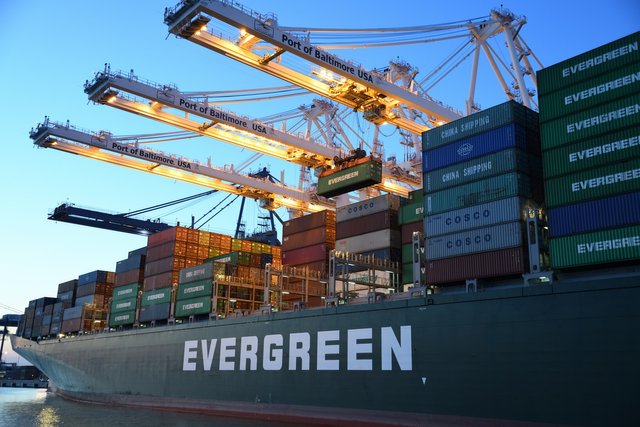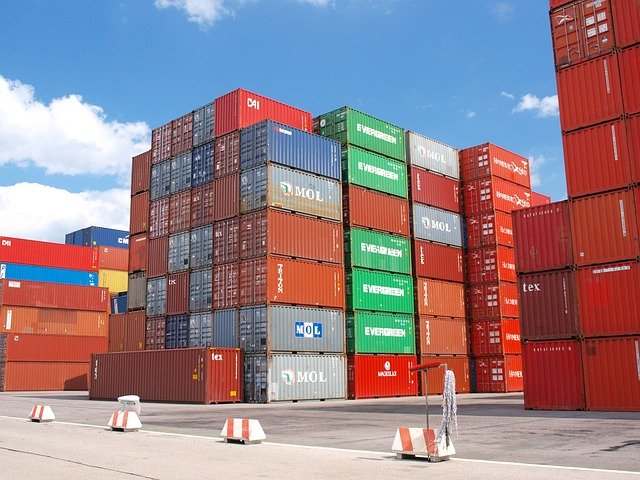Blockshipping's Shared Container Platform Can Disrupt The Shipping Industry
The Blockshipping Global Shared Container Platform (GSCP) is the framework for a blockchain based freight container registry that will allow the freight industry to utilize a greybox (shared container) economic system of freight containers.
This greybox ecosystem will allow freight containers to move in new and more efficient ways and can save the industry over $5.7 billion a year.
For those not involved in the day to day business of moving freight understanding its inefficiencies is difficult. By looking at a small occurrence that happens thousands of times every day you'll be able to understand how Blockshipping could create such enormous savings for the industry.
ABC Company Ltd. Imports Blenders Into The U.S.
ABC Co. is located in Texas and is importing a 40-foot long container from China that is full of blenders. ABC Co. ordered the blenders through a 3rd party shipping agent in China who made sure that the product was manufactured correctly and loaded onto a container that they arranged for the trip.
ABC Co. is responsible for the rental of the shipping container, the fee for the voyage, as well as their regular business expenses.
Is Something Wrong With The Blenders?
When the container arrives in the U.S. it is held by Customs for examination to makes sure the UL certification is not counterfeit. The container is trucked from the shipping terminal to the Customs facility where the entire container is unloaded (for a fee).
ABC Co. is asked by the customs broker if they would like to return the container to the terminal (for a fee) or hold the container at the customs facility where a fee will be incurred if it goes over a certain number of days.
It's A No Win Situation
Blockshipping is looking to turn this into a win-win situation with their global container registry and street turn strategy for containers.
Now let's go back in time and assume that ABC Co. was using a greybox container from the Blockshipping GSCP. When the product is examined by customs the container can immediately be used to carry any other container cargo at the customs facility that has been recently released.
If this happens the container does not need to return to the terminal first, it just moves to a different warehouse door where it is loaded with goods for transport to a different consignee.
When ABC Company's shipment is released from customs it will be loaded on any available greybox container that has recently been unloaded.
Let's Break It Down A Little More

Containers travel in a triangle between a shipping terminal, a consignee, and a shipper. In the current situation, the container always returns to the terminal between trips. In other words, the workflow is terminal>consignee>terminal>shipper>terminal.

Blockshiping GSCP will remove the extra trips and allow empty containers to move directly to shippers to be refilled prior to returning to the terminal. In this case, the flow would look like terminal>consignee>shipper>terminal.
In the example of a customs warehouse, the efficiency is increased even more. If the warehouse has 45 container doors that means that there are 45 containers being unused. These are waiting for the cargo to be reloaded.
With Blockshipping GSCP the empty containers could move to nearby businesses to be filled with cargo for return to the terminal. The now containerless cargo at the customs facility could take whatever empty container is available at their time of release.
How Will Blockshipping Do This?
Blockshipping will first create a global registry for shipping containers and add the ability for them to be geolocated at any time. The roadmap indicates that the team will add additional features in the future including AI based routing, predictive analysis, and also IoT sensors.
The container registry is the key to the greybox ecosystem which will create an economic model that utilizes shared containers. These shared containers are at the core of the platforms ability to create efficiencies in street by street triangulation systems.
The team is using a two token model for the platform that includes the tradeable CCC token that entitles holders to a portion of shared revenue. The second token, CPT, is an internal currency for industry use only that is pegged to $1 USD.
The Blockshipping platform will require many strong partnerships and acceptance by many different stakeholders. If the project is successful the cost savings to the shipping industry will be enormous.
For More Information on Blockshipping
📅Token Sale Dates: June 14
📈Token Ticker: CCC
Website || Whitepaper || ANN Thread || Telegram || Bounty
Keep Tabs On Me
Daily articles about cryptocurrency and blockchain based projects.
Steemit || Twitter || BitcoinTalk Profile



Hey! great work, as usual! I expect significant improvements in this transportation sphere. With such strong support , and specifically with the support of Danish Maritime Fund, there should be no obstacles.
It really removes the distance between the shipping company and its customers. Need more things that lessen distances between customer and service provider.